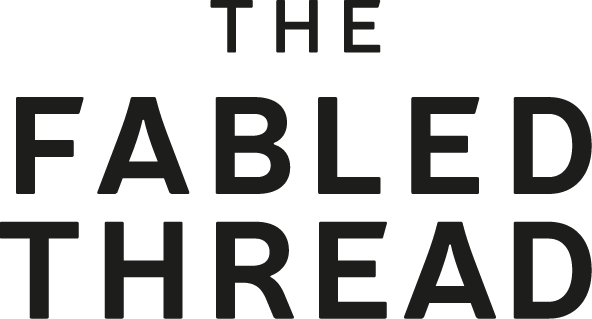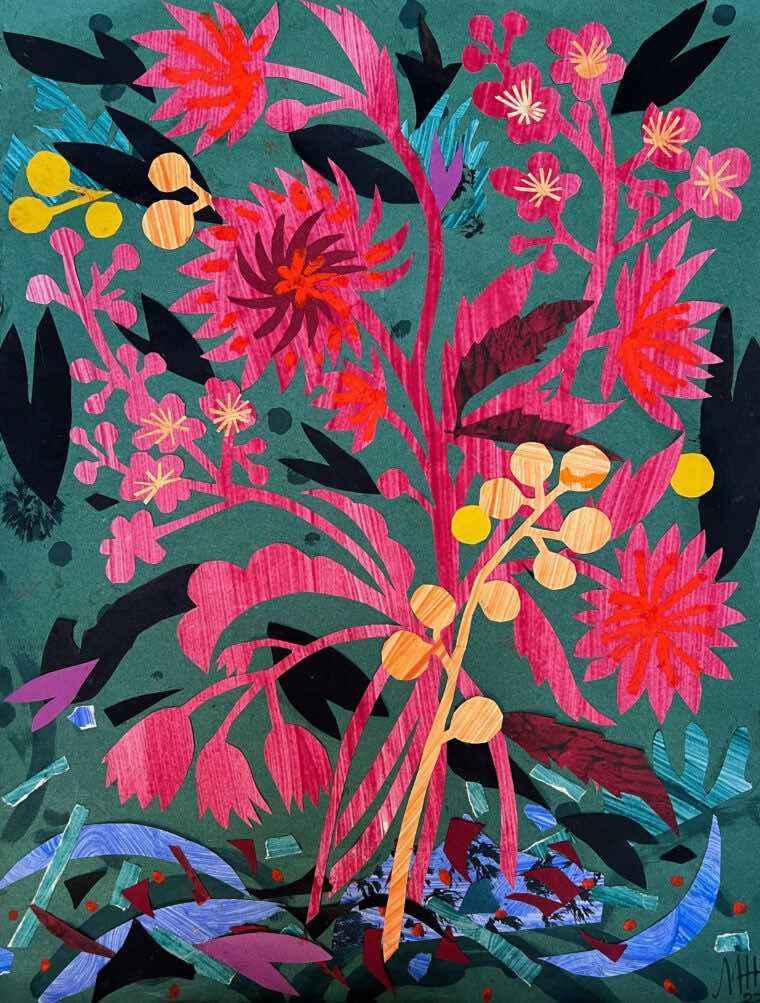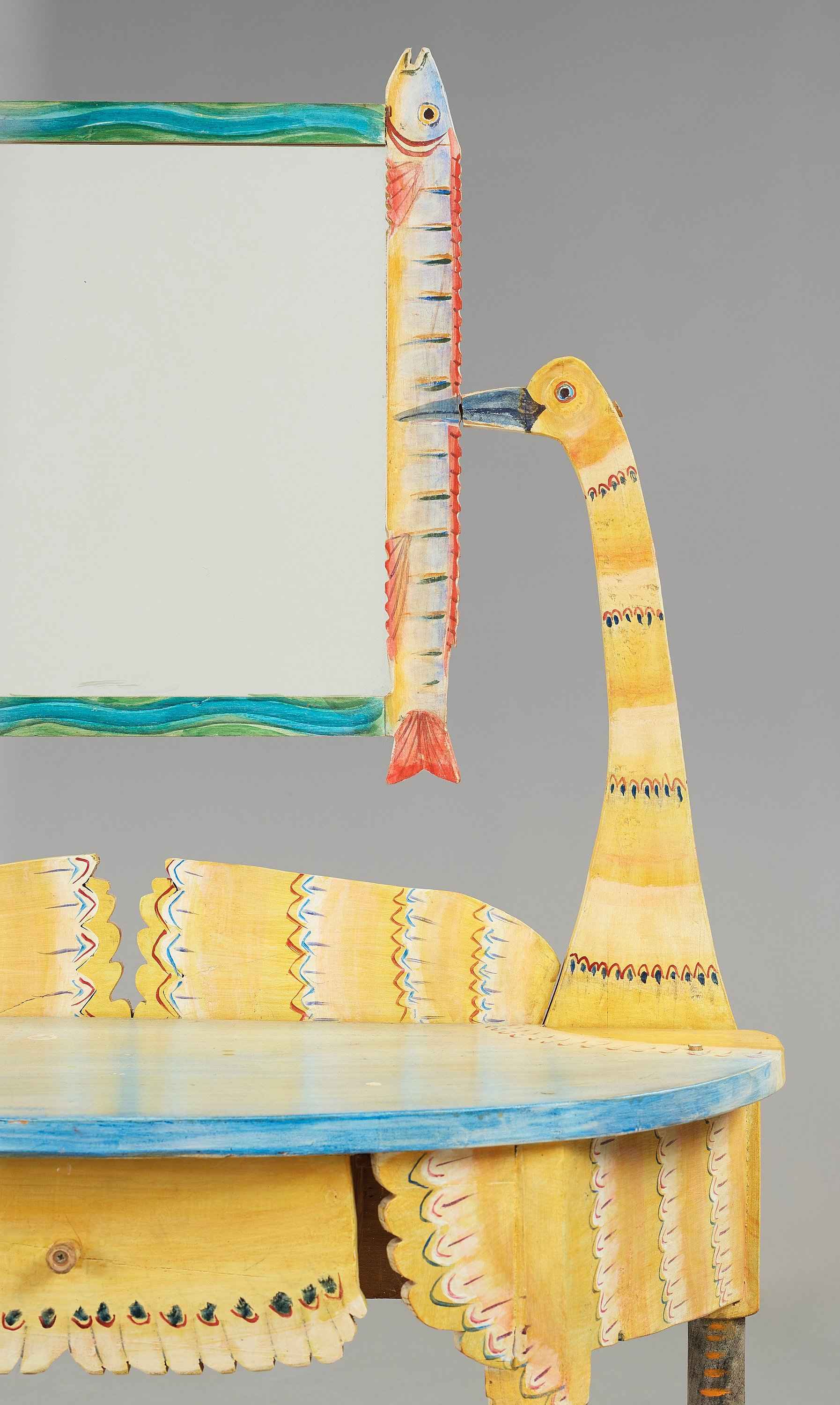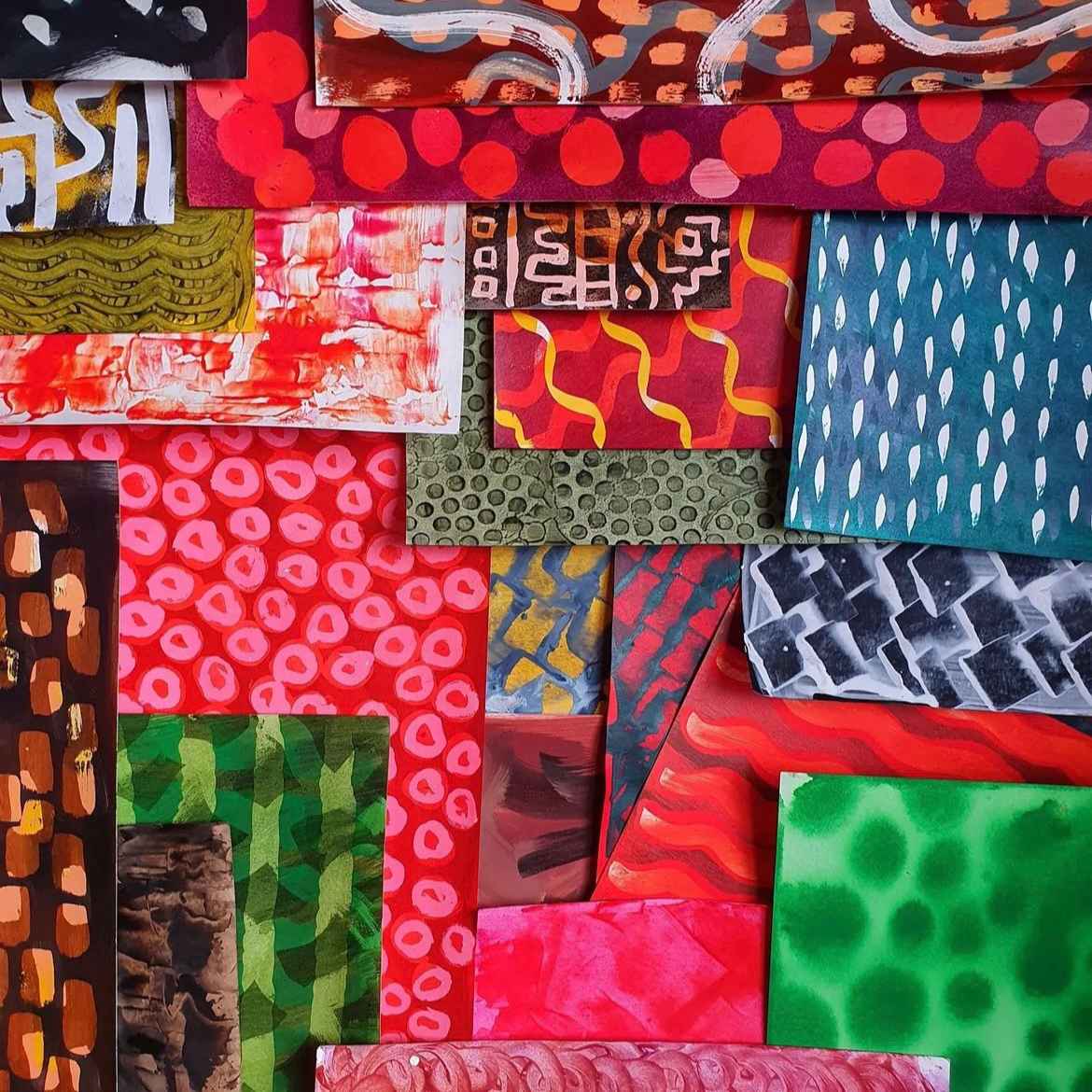
Finding Inspiration in Flowers: Five Artists and their Floral Still Lifes
Over the past year, I have become rather obsessed with floral still lifes. No two artists paintings of flowers are ever the same with hugely varied uses of colour and pattern and different mark making techniques. I am often inspired by paintings when designing my own embroidery. I have had a Matisse still life pinned to my noticeboard for years, and I often find myself creating designs that mimic his shapes and bold use of expressive colour. Beyond Matisse's florals, here is a round up of my current favourite five artists and their floral still lifes that I turn to for inspiration
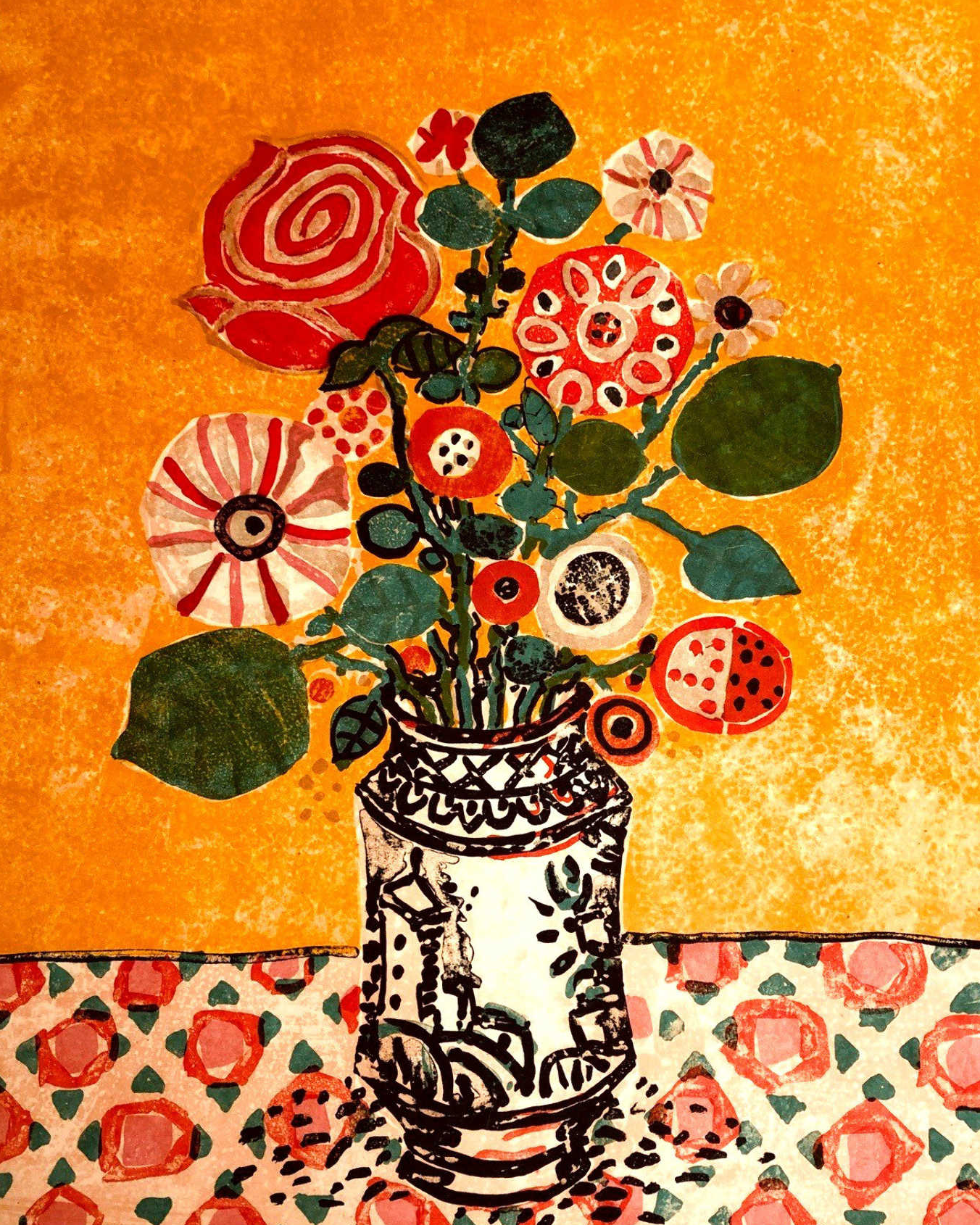

French artist Paul Aizpiri, who was active in Paris in the mid- and post-war periods, is known for his use of very bold colours and strong markmaking. His floral still lifes, which date predominantly from the 1960s and ‘70s, feature stylised flowers made of lines, dots and exaggerated geometric forms. While his earlier paintings were imbused with a sense of sadness – owing, in large part, to his experiences during the Second World War – his later paintings became more whimsical and jolly.
These two still lifes are lithographs, and in them, Aizpiri has experimented with simplifying the forms of the flowers to their most basic shapes and colours, which contrast with the intricate details on the vase and tablecloth. These prints demonstrate how effective simple shapes can be at telling the story of an image, something that translates very well to embroidery!

David Hockey’s iPad paintings have famously been pushing the boundaries of what ‘painting’ can be for many years now, and his floral still lifes are no different. I saw an exhibition of these still lifes at the Musee Matisse in Nice, and they were wonderful en masse! The vases of flowers are each placed against a plain, dark background, which allows the colours and lines to really jump out from behind the frame. Across the entire exhibition, the colours were harmonious and generally muted, with the odd bright accent to draw the eye in.
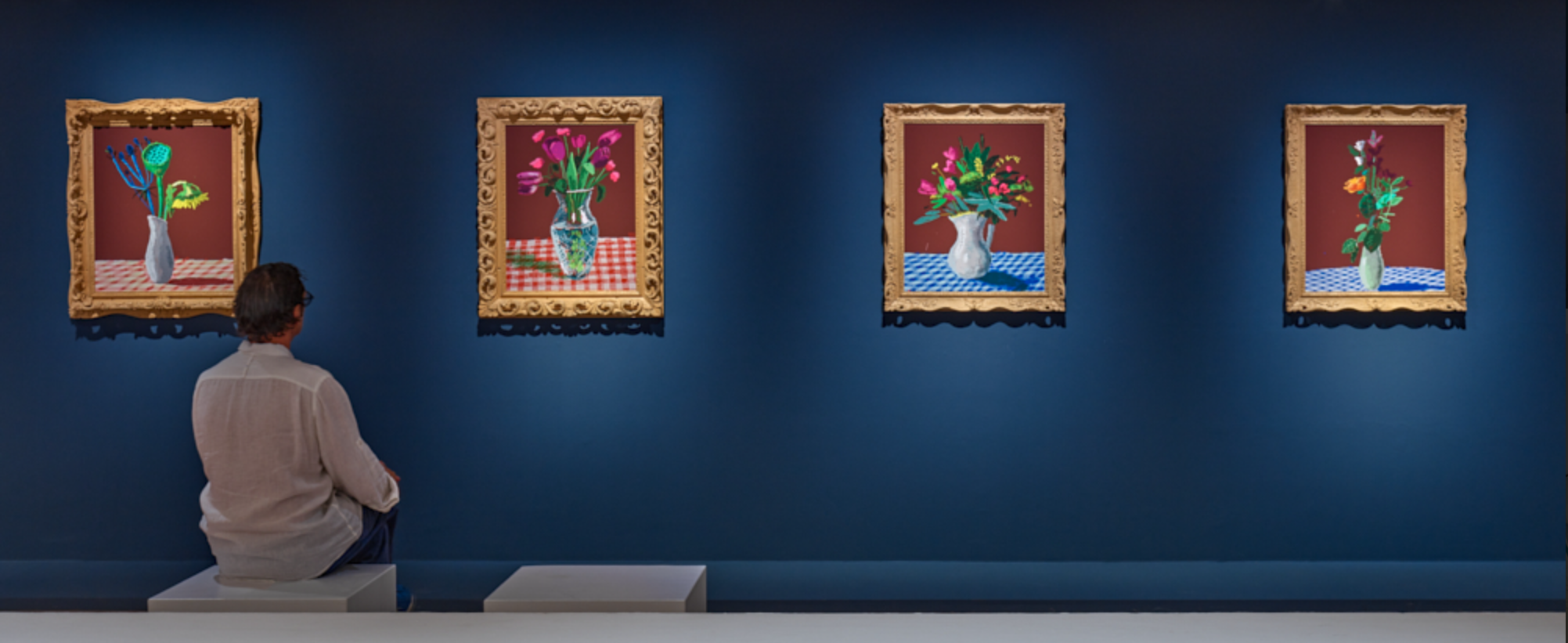
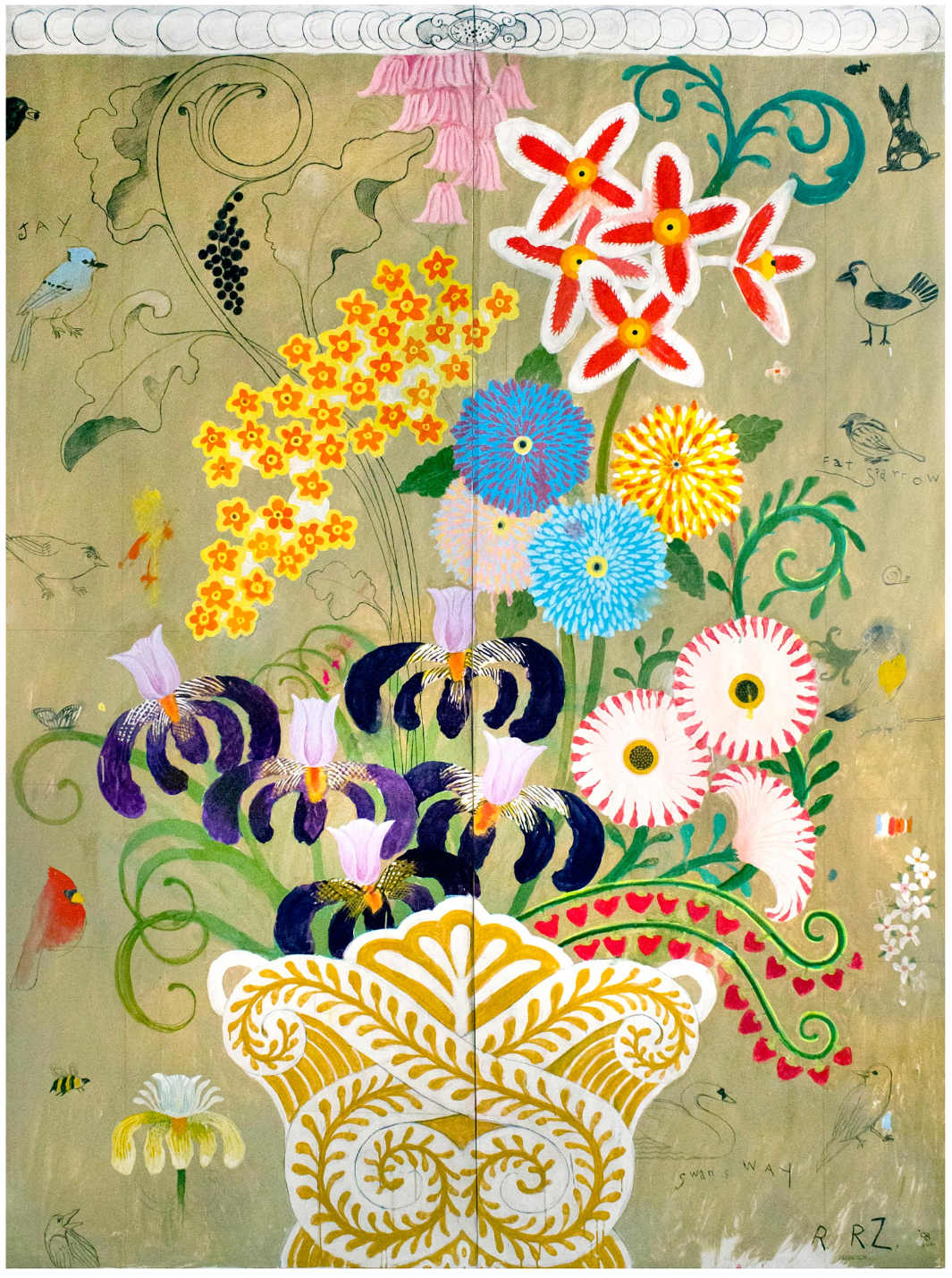
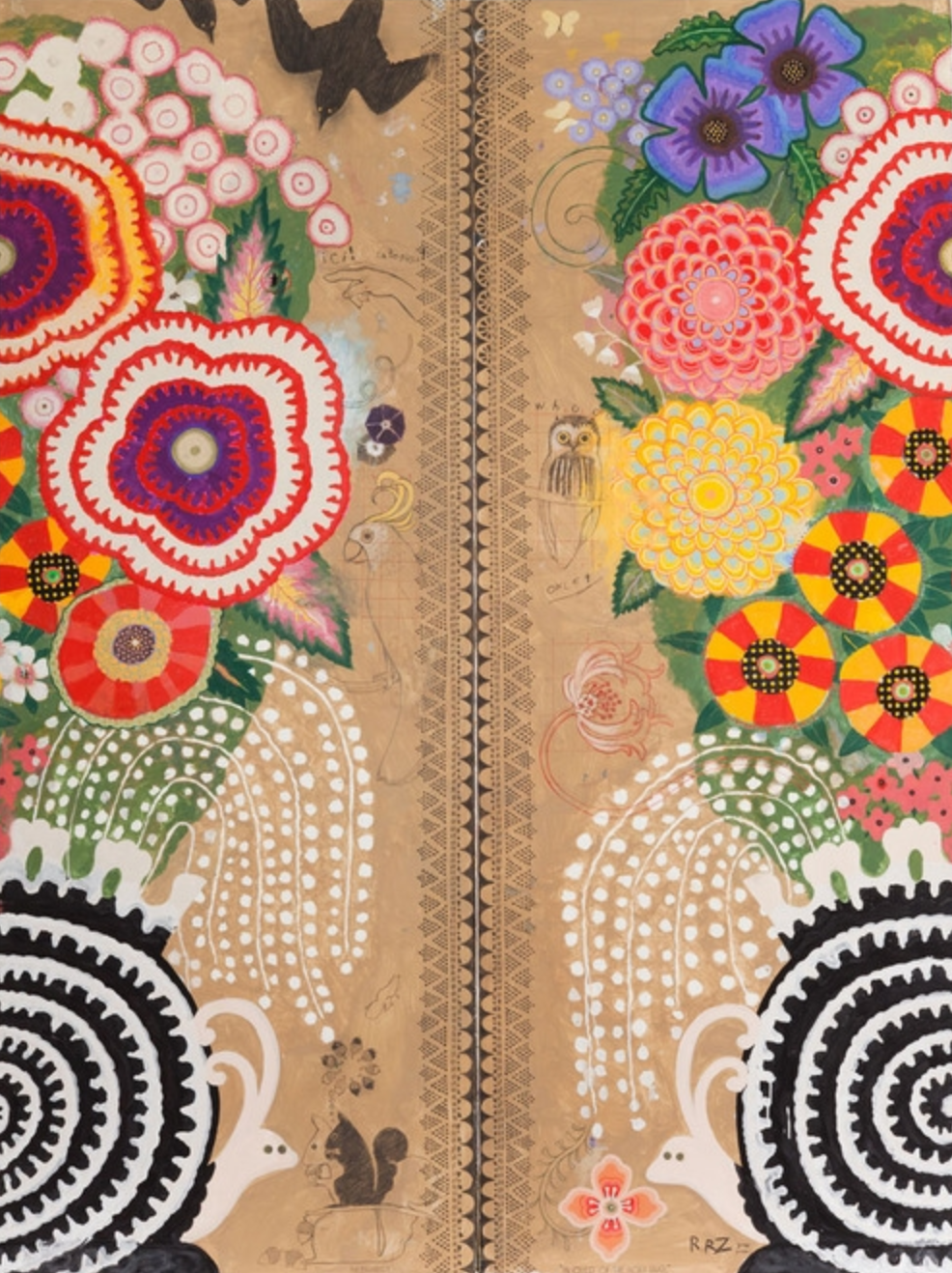
Contemporary artist Robert Zakanitch works in acrylic, watercolour and gouache on paper to create intricate, stylised, floral still lifes. During the 1970s, he was one of the founders of the Pattern and Decoration movement, a form of art inspired by the graceful, often quite feminine, patterns of home furnishings. In his more recent work, he has drawn inspiration from the real world, rather than pure pattern. Of his work, he has said “I started doing paintings that were influenced by the linoleum floors we had as kids—these big roses, and mostly flowers, and all these curlicues. I wanted to go in just the opposite direction of ‘less is more.’” The influence of textiles, particularly lace, (and, dare I say embroidery!) can be seen in his work. His work is a reminder that inspiration for beautiful images can be found anywhere, as long as you are looking for it!
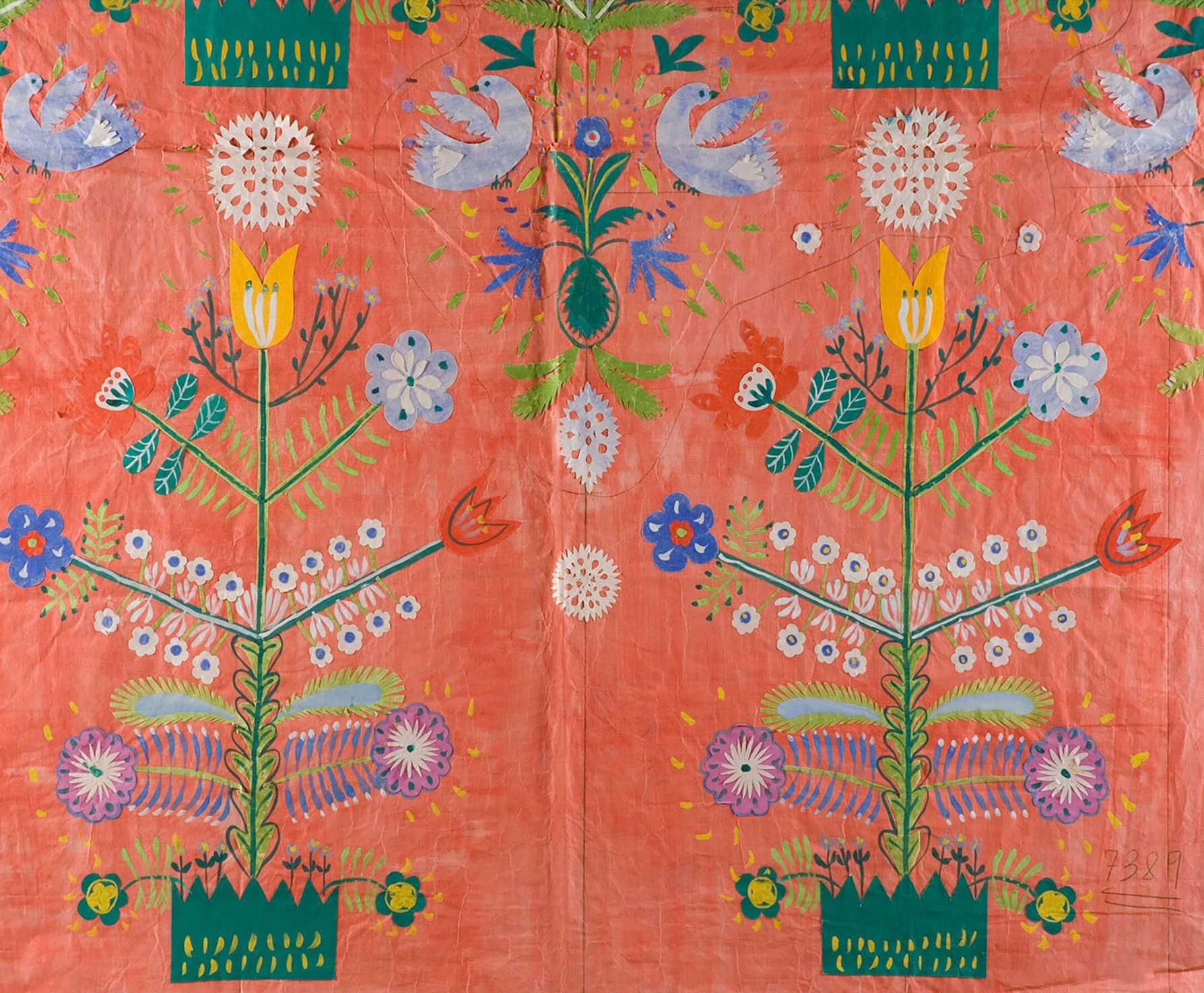
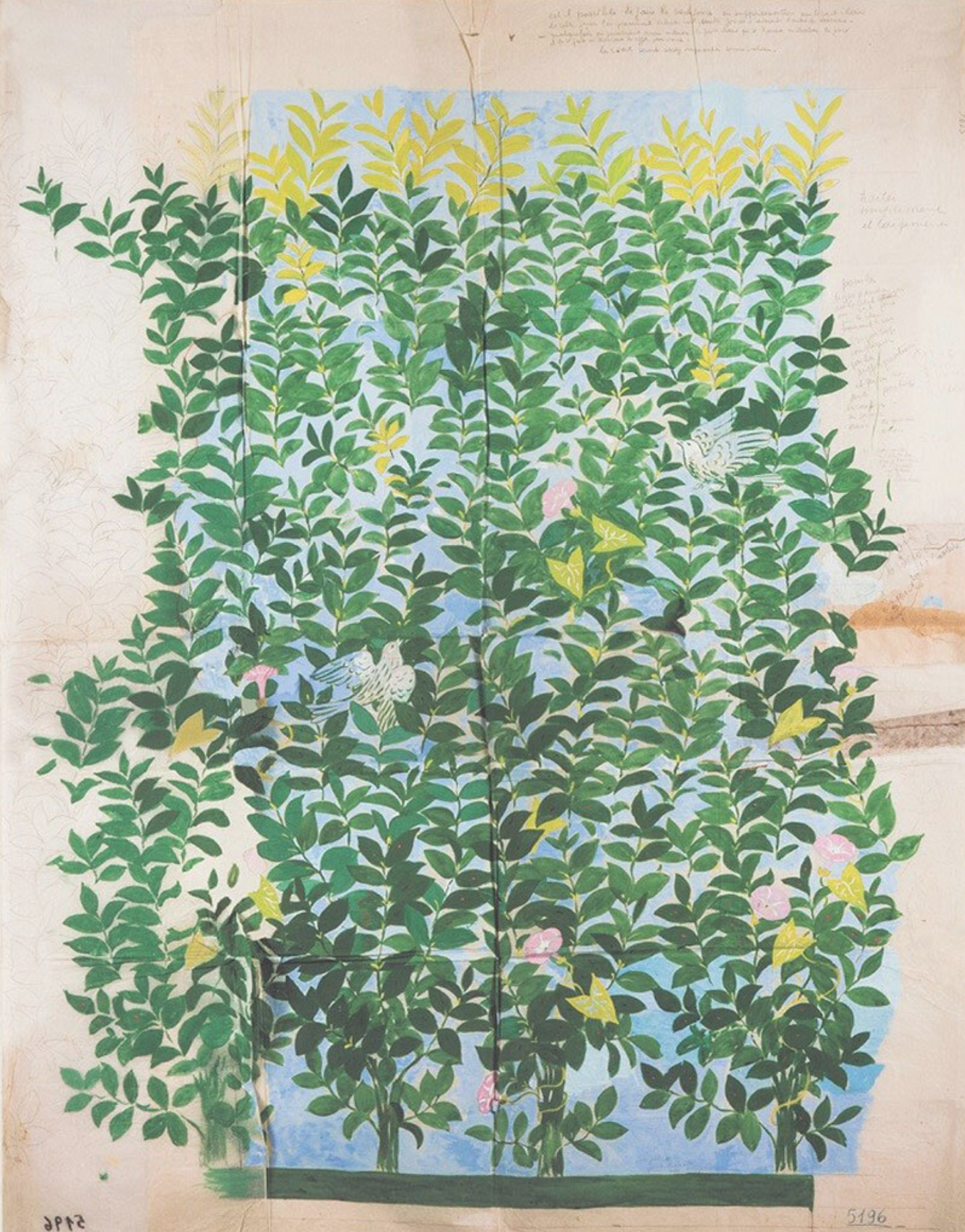
Paule Marrot was a French textile designer, who is most widely known for her flat, two-dimensional prints, which usually feature flowers. Her designs are bright, and upbeat, and depict flora and fauna in simple, almost childlike way. Growing up in Paris in the early 20th century, she took to painting early, enrolling in the School of Decorative Arts.
One summer, while staying at her aunt’s house in Cagnes-sur-Mer, she showed her work to an elderly neighbour, who just so happened to be the renowned Impressionist, Paul-Auguste Renoir. He was so impressed with her drawings and sketches, that it led to the start of an informal mentorship that had a profound and lasting impact on Paule’s designs. He encouraged her, particularly, to embrace sensitivity in her work, and she spent many afternoons sketching in his gardens. Her designs continued to celebrate sensitivity and an appreciation for the natural world, throughout her career.
To this day, her designs continue to resonate with audiences, and have been used for textiles and other homewares by the likes of Anthropologie, and in countless wallpaper designs.

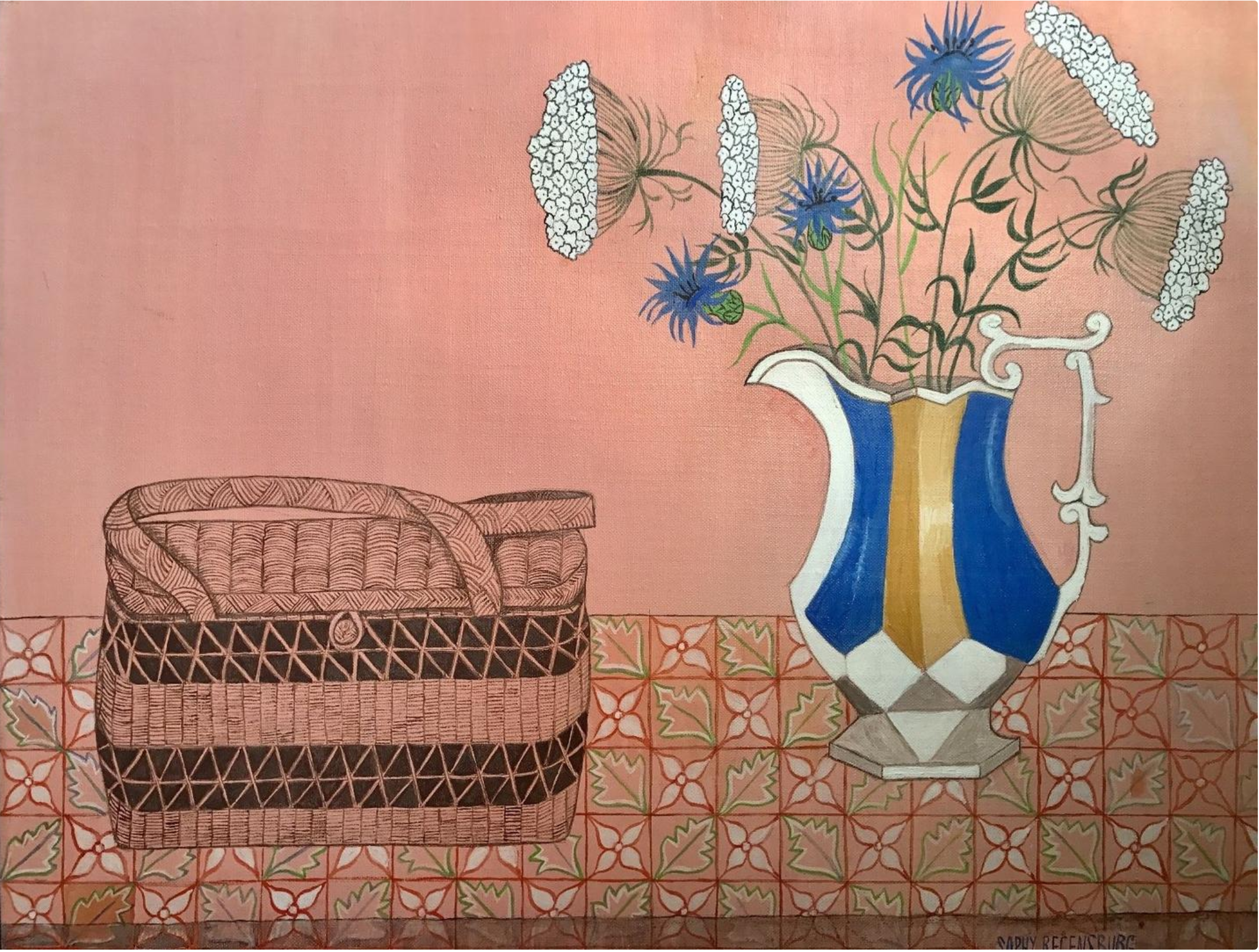
Sophy Pollak Regensburg was an American artist who lived and worked in New York during the mid-twentieth century. Having started painting as a hobby in widowhood, she went on to train at the New York School of Art, and presented work in thirteen one woman shows before her death. Her naïve paintings rely on simple compositions and the stylised depiction of flowers in vases. Her paintings are at once intricate and simple, and she gives the same care to rendering the vases, jugs and tablecloths as she does the flowers.
